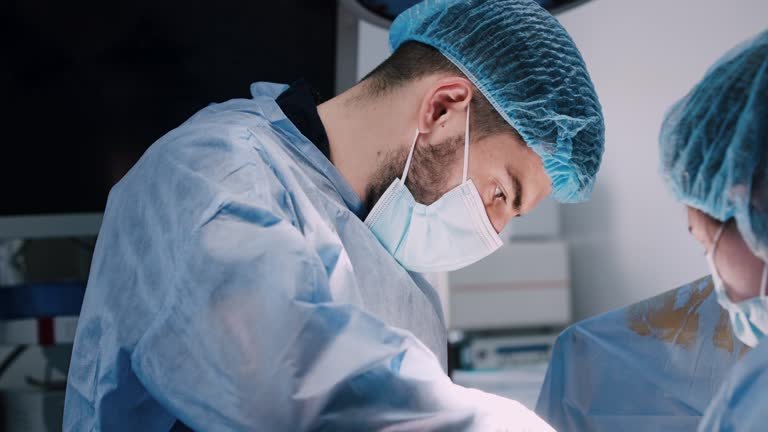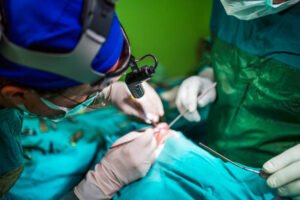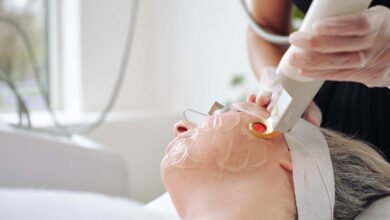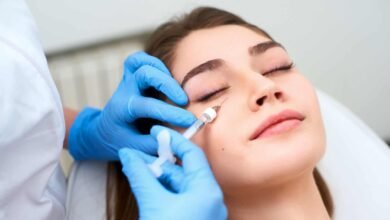
Introduction
Rhinoplasty in Al Ain, commonly known as a nose job, is a surgical procedure that reshapes the nose for aesthetic or functional reasons. Whether it’s to correct a deviated septum, improve breathing, or enhance facial harmony, rhinoplasty is a significant undertaking. Post-operative pain management is crucial for ensuring a smooth recovery and optimizing results. Understanding what to expect in terms of pain and how to manage it can greatly enhance your healing process.
Understanding Rhinoplasty and Pain Expectations
Rhinoplasty can involve various techniques, including altering the cartilage and bone structure of the nose. While the procedure itself is typically performed under general anesthesia, patients can expect some degree of pain and discomfort in the days following the surgery. Common pain expectations include swelling, pressure in the nasal area, and minor headaches. Being informed about these potential discomforts helps prepare patients for the recovery journey ahead.
Preparing for Your Recovery
Preparation is key to a successful recovery. Prior to surgery, discuss pain management strategies with your surgeon. This consultation should include:
- Setting Up a Recovery Space: Create a comfortable area at home stocked with necessities such as medications, cold compresses, and entertainment options like books or TV shows. Ensure that this space is quiet and conducive to rest, as you will need to spend ample time recuperating.

Pain Management Options
Effective pain management is essential for a smooth recovery from rhinoplasty. There are several options available:
Prescription Medications
Your surgeon will likely prescribe medications to manage pain post-surgery. These may include:
- Opioids: For moderate to severe pain, opioids like hydrocodone or oxycodone may be prescribed for the first few days.
- Non-Steroidal Anti-Inflammatory Drugs (NSAIDs): Medications like ibuprofen can help reduce inflammation and provide relief.
Over-the-Counter Medications
After the initial recovery phase, you can transition to over-the-counter options:
- Acetaminophen: This is effective for managing mild pain and can be taken alongside prescribed medications if advised by your doctor.
- NSAIDs: Continue with NSAIDs for ongoing pain and inflammation, but consult your surgeon regarding their use to avoid complications.
Alternative Therapies
For those seeking non-pharmaceutical approaches, consider:
- Acupuncture: Some patients find relief through acupuncture, which may help with pain perception.
- Physical Therapy: Gentle exercises and stretches can promote healing and alleviate tension.
Post-Operative Care Tips
In addition to medication, certain self-care practices can enhance comfort and promote healing.
Rest and Elevation
Post-operative care involves significant rest. It’s essential to keep your head elevated to minimize swelling. Use extra pillows or a recliner to maintain an elevated position while sleeping.
Cold Compress Application
Applying cold compresses to the nasal area for the first 48 hours can reduce swelling and numb the pain. Be careful not to place ice directly on the skin; instead, wrap it in a cloth to prevent frostbite.
Hydration and Nutrition
Staying hydrated and eating a balanced diet supports the healing process. Foods rich in vitamins C and K can aid recovery. Avoid salty or spicy foods, which may exacerbate swelling.
Monitoring Your Recovery
As you recover, keep an eye on your symptoms. While some discomfort is expected, watch for:
- Signs of Infection: Increased redness, warmth, or discharge from the incision site can indicate an infection.
- Unusual Symptoms: Severe pain, fever, or difficulty breathing should prompt immediate contact with your surgeon.
The Role of Follow-Up Appointments
Follow-up appointments are crucial for assessing your recovery and addressing any concerns. Your surgeon will evaluate your healing progress, remove any stitches, and adjust pain management strategies if necessary. Be sure to prepare questions or concerns in advance to make the most of these visits.
Lifestyle Adjustments for Pain Management
Certain lifestyle modifications can facilitate healing and minimize discomfort.
- Activities to Avoid: Refrain from strenuous activities, including heavy lifting or vigorous exercise, for at least two weeks post-surgery.
- Suggested Light Exercises: Gentle walks can promote circulation without straining the body. Always consult your surgeon before resuming physical activities.
Emotional Well-Being and Pain Perception
Pain perception can be influenced by your emotional state. Anxiety and stress can amplify the feeling of pain. Consider incorporating relaxation techniques such as:
- Deep Breathing Exercises: This can help reduce anxiety and improve your overall comfort level.
- Mindfulness and Meditation: These practices may aid in managing discomfort by promoting a state of relaxation.
Conclusion
Managing pain post-rhinoplasty in Al Ain involves a combination of effective pain relief strategies, self-care practices, and emotional support. By preparing adequately, understanding your pain management options, and following your surgeon’s advice, you can enhance your recovery experience. Remember, a successful healing journey sets the foundation for achieving the aesthetic and functional results you desire. Embrace this time for rest and recovery, and look forward to enjoying the benefits of your new nose.



